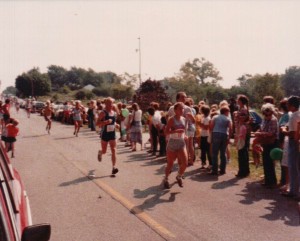I’ve always been big on walking. I probably learned it from my parents. We lived on a dirt road at the edge of town. At the end of a long, hot summer day we would saunter out of our house and down the road, dogs at our heels, a string of cats following further behind. I don’t remember that much was said on these walks. We’d greet neighbors occasionally, or perhaps remark on the color of the sunset.
Later, I became a runner, and I ran religiously—perhaps compulsively—until various joints gave out in my thirties and I had to slow to a walk again.

When my children were small, walking became a luxury. Neither child really enjoyed being in the stroller. As soon as they could walk, I had to slow down to toddler speed. For a while we had a golden age of swimming lessons—I could register them for lessons and pop off to the adult pool for a much-needed break. But for the most part I got little exercise.
My body rebelled. When the children were small, I remember scheduling an appointment with my doctor because I’d looked up my symptoms and found out I had leukemia.
“I’m happy to run blood tests,” my doctor said. “But I don’t think you have leukemia. I think you have children.”
I wish she had given me a simple prescription to cure what ailed me, but it took my back going out to get there. By the time my son was ten and my daughter was six, I was getting no walking time at all. I was in the most intense time of parenting a child with undiagnosed special needs. My husband was working over the hill,* coming home exhausted and irritable. I developed an excruciating pain in my hip.
(*That’s Santa Cruz-speak for working in Silicon Valley, which is a hair-raising mountain highway drive away from where we live.)
It turned out that the pain was being referred from a malformed spine, and there was only one treatment that worked to keep the pain at bay: walking.
I realized that the health of my family depended on my being able to get out on my own each morning, so my husband and I juggled schedules and made it happen. Soon after, he took the cue that we could juggle schedules again and find time for his bike riding. We both became healthier and happier people.
Research is showing from every which way that our bodies and minds need the repetitive back-and-forth of full-body exercise. Whether you walk, swim, bicycle, or (I’m suggesting this inspired by my daughter’s newest craze) pogo-stick, repetitive movement is a key part of mental and physical health.
Inspired by my inability to keep up with the Coursera course “Learning How to Learn,” I bought the book by Barbara Oakley that the course is based on. I figured I might not be able to keep up with the course, but if I put the book by our dinner table, I might get around to reading a bit out loud each evening.

OK, I’m going to admit that we are a highly imperfect homeschooling family. Our reading has been—I’ll put this nicely—sporadic. However, during tonight’s reading I moved into familiar territory as she talked about how sometimes, what you need to do in order to solve a problem is step away from it. I remembered those warm Midwestern nights, the panting of the dogs, and the giggling of the kids as we’d see our cats strung out in the road behind us.
There are many things that we lost as we moved toward today’s goal-oriented, success-focused culture. One of the things we lost was our innate understanding of taking it easy. Walking (or swimming, bicycling, pogo-sticking, or whatever flavor of repetitive motion you prefer) is a gift from nature. It not only realigns a malformed back; it realigns our brains and helps us work through problems even when we don’t know we have them.
It’s easy to blame the Internet for many of our ills, but I know I’d never have found this information without it. I remember myself lying on the couch that summer when my kids were 10 and 6, wondering how I was ever going to survive the physical and mental anguish. I had no idea that a simple thing like walking was key to that solution, and much more.
Further reading:
- Attention, couch potatoes! Walking boosts brain connectivity, function
- Walking for a Better Brain
- 12 Benefits of Walking